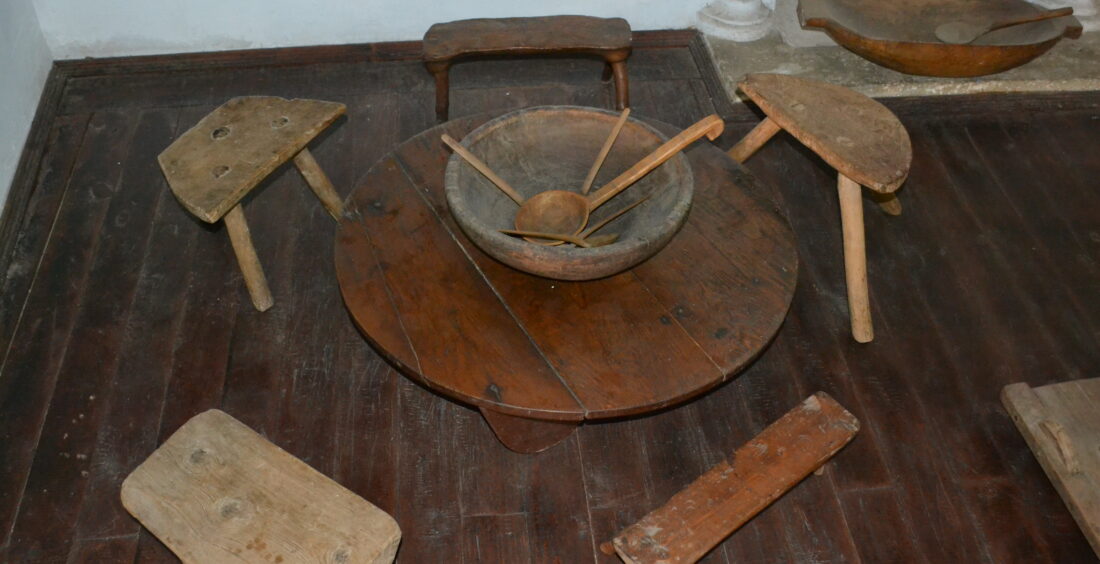In the XVI-XVII centuries, as evidenced in several documents, when Albanians sat down to eat, in most cases, they used wooden tables of different sizes.
Until the First World War, there were still deep, poor areas that used wooden bowls, spoons, and water containers. In the more developed areas, along with glazed ceramic vessels, such as pitchers, bardhaks, vorbes, jugs and pots, corn jars, and bowls, they also used copper vessels, but well tinned, as well as brass saucers.
In the village, breakfast was eaten early, before starting work. During the summer season, when the adult members of the family worked in the fields, it was customary for a woman from the house to take their lunch to the field.
One of the thousand-year-old Albanian traditions is warm and generous hospitality, so in most cases, the family’s daily food was much poorer than that prepared for holidays or friends.
In 1637, Frang Bardhi writes: “They celebrate their holidays with great damage because for at least three days they have the habit of eating and drinking to the gluttony of all their friendship and one can find an inn among them where more than 200 people can go for a party.”













 Rruga e Elbasanit, Pallati nr. 111,
Rruga e Elbasanit, Pallati nr. 111,